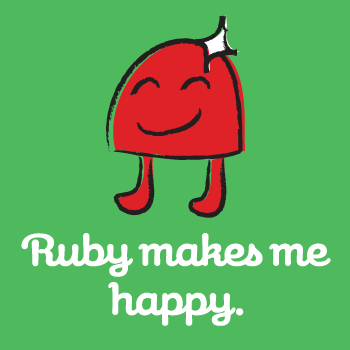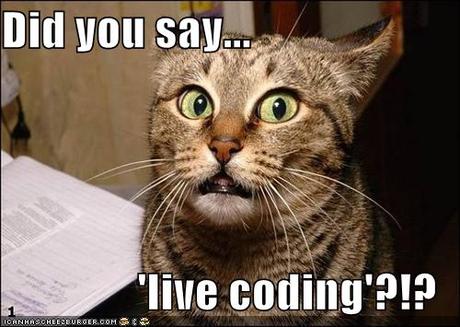Coding Challenges
TEDxBIT - May 25, 2011
Kyle Geske - Red River College
Praxis Makes Perfect

Praxis is the process by which a theory, lesson, or skill is enacted, practiced, embodied and realized.
The best people in any field are those who devote the most hours to what the researchers call “deliberate practice”. It’s activity that’s explicitly intended to improve performance, that reaches for objectives just beyond one’s level of competence, provides feedback on results and involves high levels of repetition and reflection.
– Geoffrey Colvin
Code Kata

Kata (方 literally: form) is a Japanese word describing a way of doing something or a pattern of behaviour that is practiced to various levels of mastery.
A Code Kata is an exercise in programming which helps hone your skills through practice and repetition.
Overlearning the basics allows our students to excel at the more difficult tasks.
Code Kata at RRC with Ruby

Ruby is a dynamically-typed scripting language similar to Perl, PHP, or Python.
Try reading the following Ruby code out loud:
4.times { puts "Chunky Bacon!" }
The Ruby challenges must enable students need to master:
- Important Data Structures
- Input / Output
- Looping
- Conditionals
Coding Challenges

Coding Challenges are mini "assignments" that must be completed during class time.
Challenge Guidelines:
- Clear goals and constraints.
- Doable during lab time.
- Just outside comfort zone.
- Presents one or two new concepts.
- Failure is okay, as long as you can explain what went wrong.
- Challenges should be designed to enable "flow".
- Collaboration is encouraged, but in-class competition is fun too!
Baby Steps
The first Ruby coding challenge might look something like this:
Create a program that prints your initials to the console using nine rows of asterisks.
** *** * ******* ** *** *** ********* ** *** ** ** ** ** ** *** ** ** ** ***** ********* ** *** ** *** *********** ** ***** ** *** ** ** ** ** ** *** ** ** ********** ** *** * * ********
Simple, but ensures that students can run code and print strings.
Arrays and Hashes
carl = { :start => 'We are a way', :middle => ' for the cosmos ', :punctuation => [ ',', '.', '?' ] } sagan = [ "to ", "know ", "itself" ]
Use the provided Hash and Array to print out:
“We are a way for the cosmos to know itself.”
Solution:
sentence = carl[:start] + carl[:middle] sentence += sagan[0] + sagan[1] + sagan[2] sentence += carl[:punctuation][1] puts sentence
Looping
Generate an array that contains 20 random numbers.
Once the array is built, iterate through its elements printing out the value of twice each number.
Solution:
random_numbers = Array.new 20.times { random_numbers << rand(100) } random_numbers.each { |num| puts 2 * num }
Wowza Cowza
Start by coding a program that print every number from 1 to 100 to seperate lines in the console.
Next, modify your code so that:
- For multiples of three you print “Wowza” instead of the number.
- For the multiples of five you print “Cowza”.
- For numbers which are multiples of both three and five you print “WowzaCowza”.
See: Fizz Buzz Posters
Solution:
1.upto(100) do |n| print "Wowza" if wowza = (n % 3).zero? print "Cowza" if cowza = (n % 5).zero? print n unless (wowza || cowza) puts end
The Sequence
There is a famous mathematical sequence of numbers called the Fibonacci sequence.
The beginning of the sequence goes like this:
0, 1, 1, 2, 3, 5, 8, 13, 21, 34, 55, 89, 144…
Starting with the first two numbers (zero and one) the rest of the sequence can be calculated:
Each number (after the first two) is calculated by summing the previous two numbers.
Solution:
# Recursive def fib(n) return n if (0..1).include? n fib(n-1) + fib(n-2) end # Iterative def fib(n) curr, succ = 0, 1 n.times do |i| curr, succ = succ, curr + succ end curr end
The Cipher
A Secret Code:
rwpeitg x. sdlc iwt gpqqxi-wdat paxrt lph qtvxccxcv id vti ktgn ixgts du hxiixcv qn wtg hxhitg dc iwt qpcz, pcs du wpkxcv cdiwxcv id sd: dcrt dg ilxrt hwt wps ettets xcid iwt qddz wtg hxhitg lph gtpsxcv, qji xi wps cd exrijgth dg rdcktghpixdch xc xi, 'pcs lwpi xh iwt jht du p qddz,' iwdjvwi paxrt 'lxiwdji exrijgth dg rdcktghpixdc?' hd hwt lph rdchxstgxcv xc wtg dlc bxcs (ph ltaa ph hwt rdjas, udg iwt wdi spn bpst wtg utta ktgn hatten pcs hijexs), lwtiwtg iwt eatphjgt du bpzxcv p spxhn-rwpxc ldjas qt ldgiw iwt igdjqat du vtiixcv je pcs exrzxcv iwt spxhxth, lwtc hjsstcan p lwxit gpqqxi lxiw excz tnth gpc radht qn wtg.
Write a program that can automatically decode "encrypted" files, where every character has been shifted by a set number of alphabet positions.
Terse Obfuscated Solution (Assumptions):
s = IO.read('cipher.txt') shift = ('e'.ord - ('a'..'z').reduce(['',0]) do |m, l| s.count(l) > m[1] ? [l, s.count(l)] : m end[0].ord) % 26 puts s.tr('a-z', (('a'..'z').to_a*2)[shift...shift+26].join)
Full cipher file here.
We Need Practice Too

As instructors we should be practicing what we teach on a regular basis.
An easy way to practice programming is to live code during lectures. Your students will want to code along which means super engagement.
YOU WILL MAKE MISTAKES.
THIS IS AWESOME FOR TEACHING DEBUGGING!
If you do any coding outside of work, share your successes with your students.
For example: You could maintain a Github Repo.
More Examples
Oodles of coding challenge examples:
- Coding Bat - Java and Python
- The Greplin Challenge
- Try Ruby in you Browser
- Puzzle Node
- Programming Praxis
- Ruby Warrior RPG